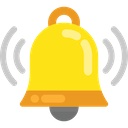Not much difference between 86 and 87. Displacement only goes from 2138 to 2188, about a 2.5% change. So you'll get about 2.5% more torque at lower rpm. Might get a little more power at top end but probably not much as peak power tends to be limited more by breathing than displacement.
I certainly wouldn't bother changing 86mm to 87 if they are in good shape otherwise. But if you need to change them anyway, might as well go for the larger ones.
In all honesty, my "real world" experience seems to show that general engine condition makes a bigger difference than even 83mm vs 87mm. My TR3A had 87mm liners in it; but my current TR3 seems to make more torque down low with 83mm liners. The 3A did pull harder at top end, though, just a few mph more than the TR3 will do.
What I would really like to have back is the engine I had way back in the 70s, with 87mm liners & a "3/4 race" cam (plus a few other goodies). It didn't idle so good, but sure woke up and pulled like a train out beyond 3300 or so. Of course it also had a habit of breaking other things (gearbox, rear end) so there are always tradeoffs


 Hi Guest!
Hi Guest!

 smilie in place of the real @
smilie in place of the real @
 Pretty Please - add it to our Events forum(s) and add to the calendar! >>
Pretty Please - add it to our Events forum(s) and add to the calendar! >> 